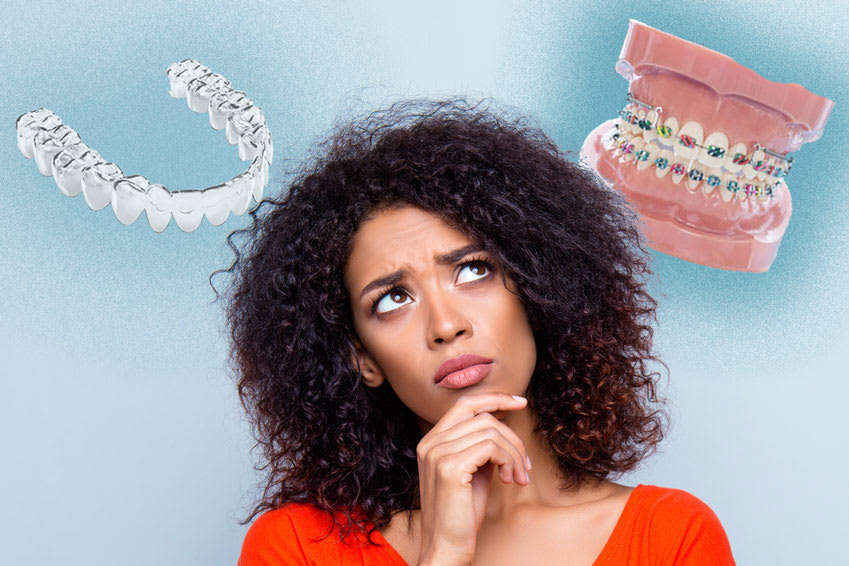Dentists often recommend that patients see an orthodontist for treatment. What’s the difference between an orthodontists and a dentist?
Orthodontists also play an essential role in oral health care. Although both types of doctors care for your dental needs, the services and procedures they provide are not quite the same.
How Do They Differ?
In a nutshell, all orthodontists are dentists, but not all dentists are orthodontists. Both doctors attend the same initial dental schooling and obtain their doctoral degrees. That’s where the differences begin.
Dentists
After finishing four years of dental school, dentists earn their doctorate and can begin working as a dentist. No additional schooling is required. They provide oral health-care services such as:
- Cleaning
- Tooth repair (fillings, bonding)
- Extractions
- Diagnose and treat gum disease
- Whitening
- Crowns and bridges
- Dental alignment (with clear braces)
- Cosmetic issues
If they see you need a dental problem corrected that they cannot repair, such as bite correction or applying braces, they will refer you to an orthodontist for the procedure or appliance.
Orthodontists
Orthodontists are dentists who further specialize in correcting teeth and jaw problems, such as bite correction and tooth alignment (braces and retainers). To practice in this specific field of dentistry, they must complete an additional two or more years of accredited dental education that allows them to practice orthodontia.
Orthodontists specialize in the following treatments:
- Bite correction (overbite, underbite)
- Correction of tooth alignment such as overcrowding or gaps
- Uses appliances such as braces, retainers, clear aligners, bridges
- Jaw alignment
The American Association of Orthodontics (AAO) recommends that children see an orthodontist before the age of 7 to have their teeth and jaw evaluated for any possible treatment needs. Children have a mixture of baby and permanent teeth at that age, and their jaws are still growing, which allows the doctor to identify potential problems early on.
Achieving a healthy smile and a properly aligned jaw is about more than cosmetic improvements. If left untreated, improperly aligned or crowded teeth can cause health issues such as headaches, lockjaw, and speech impairments.
Consult your dentist
If you have problems with overcrowding of teeth or a misaligned jaw, you would typically first see your general dentist, who would then refer you to an orthodontist, if necessary. Dentists can help you determine which type of realignment method is right for you.
Dentists trained in the application of clear aligners can often resolve issues handled by an orthodontist – consult our practice for advice on whether seeing an orthodontist is the right path to help improve your smile.




